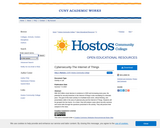Revised Edition
Short Description:
Digital Foundations uses formal exercises of the Bauhaus to teach the Adobe Creative Suite. All students of digital design and production—whether learning in a classroom or on their own—need to understand the basic principles of design in order to implement them using current software. Far too often design is left out of books that teach software for the trade and academic markets. Consequently, the design software training exercise is often a lost opportunity for visual learning. This revised edition updates the original text for use with Adobe Creative Cloud 2017 software. Order a print copy: http://www.lulu.com/content/paperback-book/digital-foundations-introduction-to-media-design-with-the-adobe-creative-cloud-revised-edition/24461332
Long Description:
Digital Foundations uses formal exercises of the Bauhaus to teach the Adobe Creative Suite. All students of digital design and production—whether learning in a classroom or on their own—need to understand the basic principles of design in order to implement them using current software. Far too often design is left out of books that teach software for the trade and academic markets. Consequently, the design software training exercise is often a lost opportunity for visual learning. This revised edition updates the original text for use with Adobe Creative Cloud 2017 software. What is Digital Foundations?
Digital Foundations: Introduction to Media Design with the Adobe Creative Suite integrates the formal principles of the Bauhaus Basic Course into an introduction to digital media production with the Adobe Creative Suite, or the FLOSS graphics applications. Why Digital Foundations is different
Most textbooks and software manuals in the current market do not include art and design history or visual principles. These books synthesize historical examples and traditional studio foundation exercises into smart, well-paced digital studio exercises. See it for yourself in Chapter 5 of Digital Foundations, where we explore Illustrator’s Color Picker window through Joseph Albers’ color exercises.
Digital media texts about Adobe Creative Suite, whether they are “Bibles”, “For Dummies” or “Classroom in a Books”, focus on tools and production tips. Digital Foundations is the only textbook that teaches visual skills through production tools. For example, look at our Table of Contents. It is organized by visual topics, including symmetry, line art, tonal scale, elements of motion, and more.
Digital Foundations is not specifically for dummies or classrooms. It was made for self-learners, artists, designers, as well as classroom applications. We wrote this book for our classrooms as well as for our parents!
Order a print copy: http://www.lulu.com/content/paperback-book/digital-foundations-introduction-to-media-design-with-the-adobe-creative-cloud-revised-edition/24461332
Word Count: 43007
ISBN: 978-1-63635-008-0
(Note: This resource's metadata has been created automatically by reformatting and/or combining the information that the author initially provided as part of a bulk import process.)




















